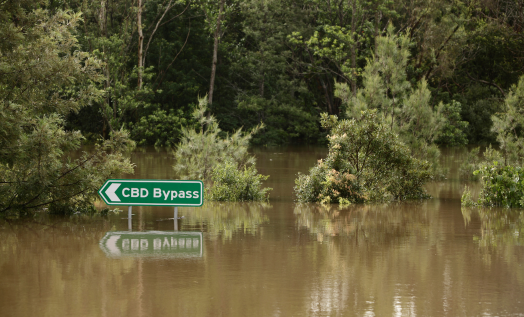Underinsurance in Property: A Growing Concern
.png)
Australian businesses are feeling the squeeze of rising insurance premiums, building costs, and extreme weather—but a more silent threat is growing: underinsurance. New figures from the Insurance Council of Australia (ICA) show that 83% of property owners are underinsured, with many lacking the coverage needed to fully rebuild after a disaster.
For SMEs, this isn’t just a paperwork problem—it’s a risk that could derail long-term recovery after a flood, fire, or storm. With premiums increasing by as much as 30% in high-risk areas and construction costs continuing to rise, many policies no longer reflect real-world rebuild costs. Businesses that haven’t reviewed their cover in the past 12 months may already be exposed.
Whether you run a warehouse in Wagga, a cafe in Cairns, or a storefront in Shepparton, underinsurance can mean the difference between bouncing back or shutting your doors. And with natural disasters expected to become more frequent and severe, it’s a problem that’s only getting worse.
What’s Behind the Rise in Underinsurance?
The Australian Prudential Regulation Authority (APRA) warns that underinsurance is now a systemic risk, with outdated policies leaving many businesses financially exposed. One major issue is that sums insured often fail to reflect the full cost of recovery—especially when factoring in business interruption, demolition, and compliance upgrades.
The Insurance Council of Australia (ICA) notes that regional and rural businesses are particularly affected, with premiums in some high-risk areas increasing by more than 30% in just two years. In extreme cases, insurers have withdrawn altogether, creating “insurance deserts” where cover is either unaffordable or unavailable.
Meanwhile, construction and rebuild costs remain high—even if material price growth has recently slowed. According to the Housing Industry Association, building materials rose only about 1.6% in the 2024–25 financial year HIA. But rebuilding multi-million-dollar infrastructure involves more than just raw materials—it includes labour, compliance, demolition, and inflation, all of which continue to drive up total rebuild expenses.
In short, although material inflation appears modest, the overall cost of reconstruction remains steep. So if your insured sums haven’t kept pace, you could still face a substantial shortfall in the event of a loss.
The Impact of Being Underinsured

Underinsurance isn’t just a technicality; it can leave you covering major rebuild costs.
If your cover is less than 80-90% of replacement value, the ICA warns you’ll only get a partial payout. Most policies have an ‘underinsurance condition’ clause, reducing payouts further. After the 2022 east coast floods, SMEs faced average gaps of over $100,000 between insured and rebuild costs, often due to outdated valuations or new code requirements.
Partial insurance isn’t a safe fallback: The Australian Small Business and Family Enterprise Ombudsman (ASBFEO) reports underinsurance is a leading cause of business failure, with some forced to close within a year.
Natural Disasters are Making Things Tougher
Extreme weather is more frequent and severe. The Climate
Council projects
that by 2030, one in 25 Australian properties could be uninsurable. Over half of recent flood and storm claims were underinsured,
leaving owners to pay the gap. Industry
groups are
calling for government action on resilience funding and insurance taxes to help SMEs stay covered.
Keeping Your Insurance Up to Date
Here’s how your SME can stay protected from underinsurance:
- Review and update sums insured to match current rebuild costs
- Report upgrades, new equipment purchases, or renovations
- Use a qualified valuer
- Include debris removal and demolition costs
- Add business interruption cover
- Schedule annual reviews
- Ask your broker or adviser about new risks
- Check for grants or resilience programs
- Keep records (photos, receipts, valuations)
Why it Pays to Work With Us
Comparison sites and calculators are helpful but don’t give the full picture. We review your cover in detail, explain the fine print, and help you understand what underinsurance really means for your business.
We’ll spot any gaps early, so you’re not left short when it counts. Don’t wait for a disaster to expose costly shortcomings in your insurance. Take proactive steps today to protect your assets and ensure your claim payouts reflect what your business is truly worth.
Important notice
This article provides information rather than financial product or other advice. The content of this article, including any information contained in it, has been prepared without taking into account your objectives, financial situation or needs. You should consider the appropriateness of the information, taking these matters into account, before you act on any information. In particular, you should review the product disclosure statement for any product that the information relates to it before acquiring the product.
Information is current as at the date the article is written as specified within it but is subject to change. BICS make no representation as to the accuracy or completeness of the information. Various third parties have contributed to the production of this content. All information is subject to copyright and may not be reproduced without the prior written consent of BICS.



